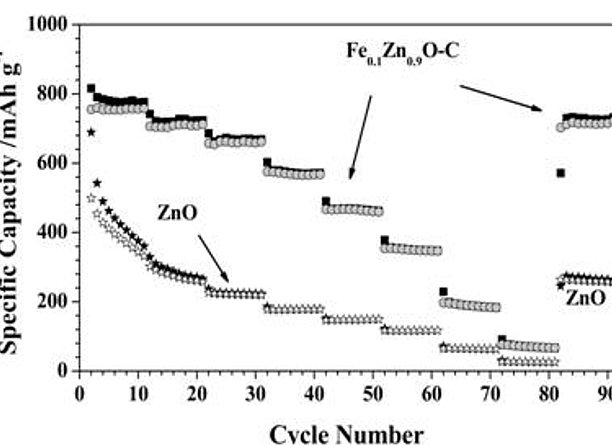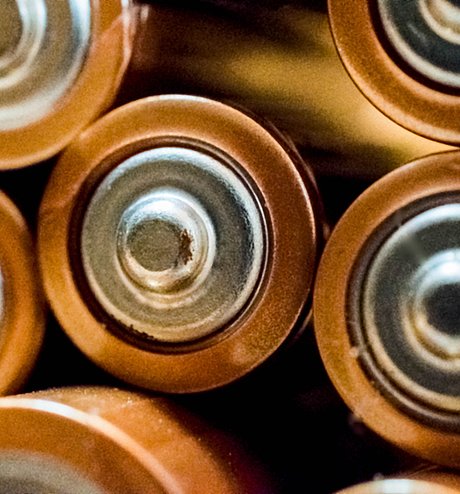SWEETNANO - Transition metal doped zinc oxide for lithium-ion batteries
Ref.-Nr. 3450
Keywords: Lithium-ion batttery, electrochemical energy storage
The presented technology is a newly developed sucrose supported synthesis of transition metal doped zinc oxide nanoparticles, which can be used as active material for the fabrication of high capacity anodes for lithium-ion batteries. The general formula of these materials is TMxZn(1-x)O (0.02 ≤ x ≤ 0.14), with the transition metal TM being, for instance, Fe or Co. The obtained nanoparticles show a homogenous particle size distribution between 20-30 nm. Anodes made of such material exhibit specific capacities exceeding 900 mAh/g,an enhanced cycling stability, as well as an improved high rate capability, particularly after applying a carbonaceous coating. The facile and cost efficient synthesis of the presented TMO nanoparticles appears to be easily up-scalable as all the reaction steps are performed under air and rather mild synthesis conditions. Furthermore, the drawback of evolving nitrogen containing gases, as it appears for a variety of others synthesis methods to obtain nanoparticles, is avoided. The additional carbon coating does not only significantly increase the conductivity of the active material, but moreover acts as a buffer for occurring volume changes upon the lithiation and delithiation of the active material. Additionally, the thus established percolating carbonaceous network supports the preservation of the electrode micro- and macrostructure, resulting in an advanced capacity retention of such electrodes.
Vorteile
- High specific capacity as anode material
- Improved cycle stability of lithium-ion batteries
- Increased conductivity of active material
- Cheap and simple synthesis that can be easily upscaled
Kommerzielle Anwendung
Future electro-mobility concepts require advanced battery technologies. Main drawbacks today are restrictions in energy density and cycle durability. The presented invention provides an advanced material that helps to overcome these problems. Extended laboratory tests have already demonstrated the advantages of the invented material for use in lithium-ion battery anodes. Further improvement is currently under development at the MEET battery research center. PROvendis offers licenses for this invention to interested companies on behalf of the University of Muenster, Germany.
Aktueller Stand
A patent application for this technology has been filed at the German Patent Office (DPMA) and worldwide protection is still possible. The application has not yet been disclosed. A further detailed description of the invention and scientific results can be given on request.
Relevante Veröffentlichungen
Walkenhorst, J. et al. (2000) The EphA4 receptor tyrosine kinase is necessary for the guidance of nasal retinal ganglion cell axons in vitro. Mol. Cell. Neurosci. 16(4): 365-75.
—
Eine Erfindung der Universität Münster.



